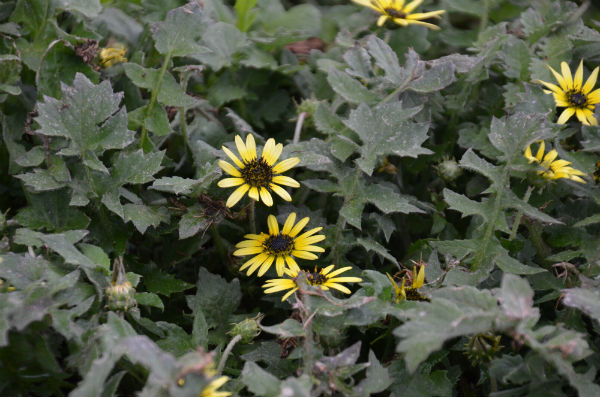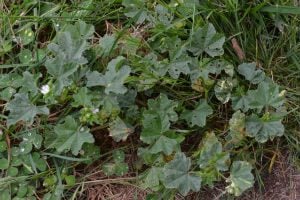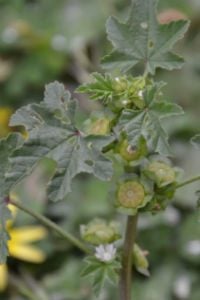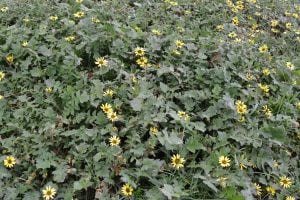Broad-leaved weeds such as capeweed Arctotheca calendula, marshmallow Malva parviflora, and fat hen Chenopodium album are common throughout Australian fruit growing areas. These plants often support pest species such as lightbrown apple moth, harlequin bugs, and thrips. Control of the weeds will help reduce prevalence of the pests.
Weed control should start before green tip on your fruit trees so that you do not drive the pests into your trees when leaves and flowers are starting to appear on the trees. Marshmallow and fat hen may also support populations of weevils whose larvae feed on the weed roots. The adult weevils, and harlequin bugs, can also use the weeds as ladders to access the trunks of fruit trees.
There are always trade-offs in IPDM and weeds are no exception. Bees are attracted to capeweed flowers so care needs to be taken to not use sprays toxic to bees while capeweed is flowering. Having a grass sward free of flowering broad-leaved weeds will encourage bees to concentrate on flowering fruit trees, and also discourage pests such as western flower thrips, but may reduce the populations of small parasitic wasps that rely on nectar as an energy source while they are seeking insect hosts in which to lay their eggs.




